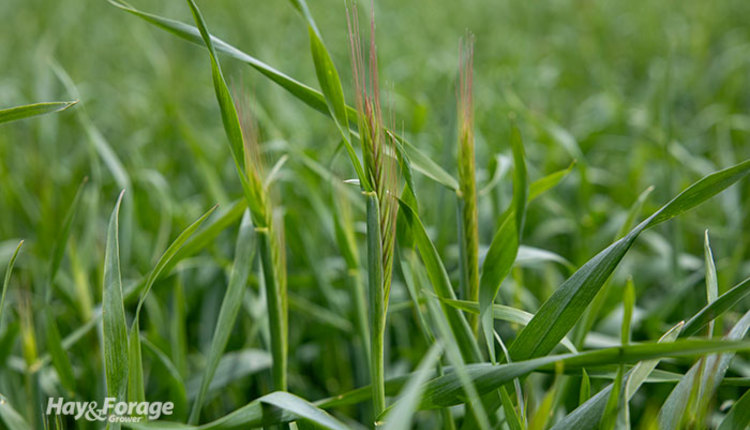
With corn silage harvest underway — or almost underway — on many farms, crop fields will soon be ready to seed winter forage. Wheat and rye are common cereal grains planted after corn for silage production in the spring, but triticale has been climbing winter forage ranks in recent years as well.
Triticale, a hybrid of wheat and rye, has been shown to be a high-quality forage with good yield potential. Planting the annual forage reduces erosion and gives farmers more opportunities to apply manure. In a recent issue of Crop Soil News newsletter, Thomas Kilcer notes triticale also creates ideal field conditions for no-till seeding the following spring.
The keys to realizing triticale’s best attributes are timely planting and adequate fertilization. Kilcer suggests seeding triticale two weeks before the recommended planting date for wheat in a specific area to encourage early tiller growth. This is especially critical for Northern regions.
“Farmers who have followed this management step are now harvesting 3 to 4 tons of dry matter per acre when triticale is harvested at flag leaf stage the next spring,” the certified crop advisor states. “The crop should go into the winter as a solid stand with no soil showing between the rows. If the soil shows, you have not maximized yield potential.”
Fall fertilization will also enhance a triticale stand. Kilcer recommends applying at least 60 pounds of nitrogen per acre and 6 pounds of sulfur per acre at planting to initiate fall growth and drive forage yield. Another application of nitrogen in the spring can also boost tillering and raise crude protein levels, which can reach up to 20%.
Planting triticale in a field that previously received heavy manure applications can help prevent the nutrient from leaching through the soil profile or undergoing denitrification at the soil surface. Manure can also be applied at or after triticale planting, but Kilcer advises against waiting to seed the winter forage according to manure application schedules.
“Even with the added nitrogen, you lose more yield potential by delaying planting,” he states. “In those cases, apply some nitrogen at planting and save manure to be injected in the field after soil temperatures drop below 50°F.”
Quality over quantity
In addition to having high crude protein, triticale has been shown to be a highly digestible feedstuff. Kilcer refers to a study in Pennsylvania where researchers compared the neutral detergent fiber digestibility (NDFD) of alfalfa and triticale. Alfalfa had an NDFD30 of 46, whereas triticale had an NDFD30 of 70, which ultimately translated to more pounds of milk per unit of dry matter.
Of course, high forage quality is a trade-off of high forage yield. Harvesting triticale at flag leaf stage or early boot stage will guarantee better forage quality, and it allows more time to plant a subsequent crop. In fact, Kilcer encourages farmers to no-till corn, soybeans, or other forages into triticale stubble.
“There is little to no residue to interfere with planting or give a place for slugs to hide and eat your crop,” Kilcer asserts. “The stubble keeps the drying wind off the soil surface so plants have maximum moisture, and the stubble and decaying root system protect the soil from erosion.”
On the other hand, waiting to harvest triticale until soft dough stage or later can offer almost 50% more yield, but forage quality will suffer. At that point, it may not be practical to plant another full-season crop either.

